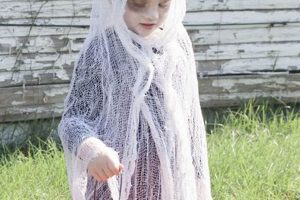Creating representations of indigenous attire at home, often termed as a do-it-yourself project, involves the crafting of garments and accessories intended to resemble clothing worn by Native American peoples. An example might include constructing a feathered headdress using craft supplies or sewing a fringed vest from faux suede fabric.
The significance of crafting such items lies in the opportunity for educational engagement and creative expression. However, it is crucial to acknowledge the sensitivity surrounding the historical and cultural context of Native American clothing. Authentic garments hold deep spiritual and symbolic meaning, and their replication, particularly without proper understanding and respect, can be perceived as disrespectful and culturally appropriative.
Therefore, this exploration necessitates a careful consideration of ethical implications. The subsequent sections will delve into responsible approaches to costuming, focusing on respectful inspiration and avoiding the perpetuation of harmful stereotypes. This includes exploring historically informed design choices and prioritizing educational opportunities to foster greater understanding of diverse Native American cultures and traditions.
Considerations for Creating Representations of Indigenous Attire
Approaching the creation of garments inspired by Native American clothing requires careful consideration of cultural sensitivity and historical accuracy. The following tips aim to guide individuals towards respectful and informed design choices.
Tip 1: Prioritize Research and Education: Before initiating any crafting project, dedicate time to research the specific Native American tribe or cultural group that inspires the design. Understanding their history, traditions, and the significance of their clothing is paramount.
Tip 2: Avoid Generic Representations: Refrain from creating a single, homogenized “Indian” costume. Native American cultures are incredibly diverse, and clothing styles vary significantly between tribes. Focus on representing a specific tribal group accurately.
Tip 3: Respect Sacred Elements: Certain items, such as eagle feathers or specific patterns, hold deep spiritual significance within certain tribes. Avoid replicating these unless you have explicit permission from the tribe or are creating the item for educational purposes with proper context.
Tip 4: Emphasize Inspiration, Not Replication: Instead of creating an exact replica of traditional clothing, consider drawing inspiration from design elements like colors, patterns, or materials. Incorporate these elements into a modern or unique design.
Tip 5: Choose Materials Responsibly: Opt for sustainable and ethically sourced materials whenever possible. Avoid using animal products that may have cultural or environmental significance to Native American tribes.
Tip 6: Seek Guidance from Native American Artisans: If possible, consult with Native American artisans or cultural experts for guidance and feedback on the design. This can ensure accuracy and sensitivity.
Tip 7: Provide Context and Education: If the created item is worn or displayed, provide context and education about the specific Native American culture that inspired it. This can help to promote understanding and respect.
By adhering to these guidelines, individuals can engage in creative projects inspired by Native American clothing while mitigating the risk of cultural appropriation and promoting greater understanding and respect for indigenous cultures.
The subsequent sections will explore the ethical implications of cultural representation in greater detail, providing resources for further learning and engagement with Native American communities.
1. Cultural Sensitivity
The creation of representations of indigenous attire, specifically within the context of do-it-yourself projects, necessitates a heightened awareness of cultural sensitivity. The act of costuming, when it involves cultures outside one’s own, can easily veer into cultural appropriation if not approached with careful consideration and respect.
- Representation vs. Appropriation
Distinguishing between respectful representation and cultural appropriation is paramount. Representation involves accurately and respectfully portraying elements of a culture with understanding and permission, while appropriation often involves taking elements out of context, trivializing them, or using them without proper acknowledgment or respect. In the context of crafting representations of indigenous attire, appropriation might involve creating a generic “Indian” costume that disregards the diversity of Native American cultures or using sacred symbols without understanding their meaning.
- Tribal Specificity and Diversity
Native American cultures are incredibly diverse, with each tribe possessing unique traditions, clothing styles, and spiritual beliefs. A generic “Indian” costume erases this diversity and perpetuates harmful stereotypes. Cultural sensitivity requires acknowledging this diversity and focusing on accurately representing a specific tribal group. This involves researching their specific clothing styles, materials, and adornments.
- Sacred and Symbolic Items
Certain items of clothing or adornment hold deep spiritual significance within Native American cultures. These items may be considered sacred and should not be replicated without permission or understanding of their meaning. Examples include eagle feathers, specific patterns, or ceremonial garments. Replicating these items without proper context or respect is a form of cultural appropriation and can be deeply offensive.
- Consultation and Collaboration
Engaging with Native American communities and seeking their guidance is crucial for ensuring cultural sensitivity. This may involve consulting with tribal elders, artisans, or cultural experts for feedback on the design. Collaboration with Native American individuals can ensure that the representation is accurate, respectful, and avoids perpetuating harmful stereotypes.
Therefore, navigating the creation of indigenous attire-inspired projects requires a commitment to cultural sensitivity. By prioritizing respect, education, and consultation, individuals can create representations that honor Native American cultures rather than appropriating them. Continued learning and dialogue are essential components of this process.
2. Historical Accuracy
The intersection of historical accuracy and do-it-yourself representations of indigenous attire reveals a complex relationship where inaccuracies can perpetuate misinformation and disrespect. The creation of such attire absent meticulous research and attention to deta
il runs the risk of consolidating stereotypes and misrepresenting the diverse histories and cultures of Native American tribes. For example, combining elements from different tribal groups into a single garment, such as a Plains-style headdress with Southeastern Woodlands-style clothing, disregards the distinct cultural identities and historical contexts of each tribe. This, in turn, contributes to a generalized and inaccurate portrayal of Native Americans.
The importance of historical accuracy in this context lies in its potential to promote genuine understanding and appreciation. When crafting attire inspired by a specific tribe, researching the materials used, the construction methods employed, and the significance of specific designs is crucial. For instance, understanding that certain dyes were derived from specific plants available only in certain regions provides valuable insight into the resourcefulness and environmental knowledge of the tribe. Replicating the attire as accurately as possible, given available resources and skill level, demonstrates a commitment to honoring the tribe’s cultural heritage. Educational resources such as museum collections, historical photographs, and tribal websites can provide valuable guidance.
In conclusion, historical accuracy serves as a critical component of any attempt to create representations of indigenous attire. Failure to prioritize accuracy not only undermines the educational value of the project but also contributes to the perpetuation of harmful stereotypes. By prioritizing thorough research, respecting tribal diversity, and seeking authentic sources of information, individuals can create attire that honors the cultural heritage of Native American tribes and promotes greater understanding and respect.
3. Appropriate Inspiration
The crafting of attire intended to resemble that of Native American cultures necessitates careful consideration of inspiration sources. The desire to create representations should be rooted in genuine appreciation and respect, rather than mere imitation or appropriation. A responsible approach involves drawing inspiration from specific design elements, patterns, or materials used by a particular tribe, rather than attempting to create a generic or stereotypical “Indian” costume. For example, instead of creating a full headdress without understanding its cultural significance and who is entitled to wear it, one might draw inspiration from the color palettes used in traditional beadwork of the Cheyenne tribe to create a contemporary piece of jewelry or clothing.
Appropriate inspiration dictates a departure from literal replication of sacred or ceremonial items without the consent or guidance of the relevant tribal community. The focus should be on incorporating design motifs or techniques in a respectful and informed manner. This could involve using geometric patterns found in Navajo rugs to design a modern textile piece, or adapting the fringing techniques used on Lakota leather garments to embellish a contemporary jacket. It is imperative to acknowledge the specific tribal origin of the inspiration and to avoid misrepresenting or trivializing cultural symbols. Museums, tribal cultural centers, and reputable historical resources can serve as valuable sources of information for identifying appropriate inspiration and understanding the cultural significance of various design elements.
Ultimately, appropriate inspiration, in the context of crafting representations of indigenous attire, serves as a safeguard against cultural appropriation and promotes genuine appreciation for Native American cultures. This approach fosters creativity while upholding ethical considerations, ensuring that the resulting garments are a respectful homage rather than a harmful misrepresentation. It requires ongoing learning, self-reflection, and a willingness to engage with Native American communities to ensure that the inspiration is truly appropriate and respectful.
4. Educational Opportunity
The construction of attire inspired by Native American cultures presents a significant educational opportunity. This extends beyond the acquisition of crafting skills and encompasses a deeper understanding of history, cultural diversity, and ethical considerations related to representation. The process can facilitate engagement with complex issues of cultural appropriation and promote respect for indigenous traditions.
- Tribal-Specific Research
Creating attire representing a specific tribe necessitates in-depth research into their history, traditions, and material culture. This process fosters an understanding of the unique identities of diverse Native American groups and combats the harmful generalization of “Native American” as a single, monolithic entity. For instance, researching the specific beadwork techniques of the Lakota tribe provides insight into their artistic traditions and the historical context of their designs.
- Material Culture and Resource Management
Examining the materials used in traditional Native American clothing provides insights into their resource management practices and relationship with the environment. Learning about the specific plants used for dyes or the methods of preparing animal hides reveals the deep ecological knowledge possessed by these cultures. Replicating these processes, where feasible and ethical, offers a tangible understanding of traditional practices.
- Ethical Considerations and Cultural Appropriation
The act of creating attire inspired by Native American cultures raises crucial ethical questions about cultural appropriation and representation. Engaging with these questions encourages critical thinking about the power dynamics involved in representing other cultures and the potential harm caused by trivializing or misrepresenting sacred traditions. Discussing the appropriateness of certain design choices and seeking guidance from Native American communities can foster a more responsible and respectful approach.
- Deconstructing Stereotypes and Promoting Accurate Representation
The educational opportunity inherent in crafting attire inspired by Native American cultures extends to deconstructing harmful stereotypes perpetuated by inaccurate or insensitive portrayals. By focusing on historical accuracy and cultural sensitivity, individuals can create representations that challenge these stereotypes and promote a more nuanced and respectful understanding of Native American cultures. This can involve actively seeking out and amplifying the voices and perspectives of Native American individuals and communities.
In conclusion, the act of crafting attire inspired by Native American cultures should be viewed as an opportunity for comprehensive education. By prioritizing tribal-specific research, understanding material culture, engaging with ethical considerations, and deconstructing stereotypes, individuals can transform a simple crafting project into a powerful tool for promoting cultural understanding and respect. The educational value lies not only in the finished product but also in the process of learning, reflecting, and engaging with the complexities of cultural representation.
5. Ethical Implications
The endeavor of creating do-it-yourself representations of Native American attire carries significant ethical weight. The casual replication of cultural garments, especially without proper understanding or respect, can perpetuate harmful stereotypes and contribute to cultural appropriation. This is because clothing and adornment often hold deep cultural and spiritual significance for Native American tribes. Transforming these items into costumes, particularly for entertainment or amusement, can trivialize their meaning and disrespect the communities they represent. The act of creating such attire, therefore, demands careful consideration of its potential impact on Native American communities, and a commitment to avoiding actions that may cause offense or harm.
The core ethical considerations revolve around issues of cultural appropriation, misrepresentation, and the perpetuation of harmful stereotypes. Cultural appropriation occurs when elements of a culture are taken and used without permission or understanding, often for personal gain or entertainment. For example, the use of a feathered headdress, traditionally worn by respected members of certain Plains tribes, as a party accessory diminishes its cultural significance. Misrepresentation arises from inaccurate or stereotypical portrayals of Native American attire, often combining elements from different tribes or historical periods into a single, generalized costume. This erases the distinct cultural identities of individual tribes. The creation and promotion of such costumes can contribute to the perpetuation of harmful stereotypes, reinforcing inaccurate and often offensive images of Native Americans in popular culture. Furthermore, the commercialization of these costumes can profit from cultural heritage without benefiting Native American communities.
In summary, the creation of do-it-yourself Native American attire necessitates a keen awareness of the ethical implications involved. The potential for cultural appropriation, misrepresentation, and the perpetuation of harmful stereotypes demands a proactive approach characterized by thorough research, cultural sensitivity, and a commitment to respectful representation. The ultimate goal should be to avoid causing harm to Native American communities and to promote a more accurate and nuanced understanding of their rich and diverse cultures. Failure to address these ethical concerns risks perpetuating historical injustices and contributing to the ongoing marginalization of Native American voices and perspectives.
Frequently Asked Questions Regarding Creating Representations of Indigenous Attire
The following questions address common concerns and misconceptions surrounding the crafting of attire inspired by Native American cultures. These answers aim to provide clarity and guidance on ethical and responsible approaches.
Question 1: Is it inherently wrong to create attire inspired by Native American clothing?
The creation of such attire is not inherently wrong, but it necessitates careful consideration of ethical implications. The potential for cultural appropriation, misrepresentation, and the perpetuation of harmful stereotypes demands a thoughtful and respectful approach. The intent, research, and execution of the project are paramount.
Question 2: How can one ensure that the creation of attire inspired by Native American clothing is respectful and not appropriative?
Ensuring respect requires thorough research into the specific tribe inspiring the design. It necessitates avoiding generic representations and focusing on historical accuracy. Furthermore, it involves refraining from replicating sacred or ceremonial items without proper understanding or permission. Consultation with Native American artisans or cultural experts is highly recommended.
Question 3: What constitutes a “generic” or stereotypical representation of Native American clothing?
A generic representation typically involves combining elements from different tribes into a single garment, such as a Plains-style headdress with Southeastern Woodlands-style clothing. It disregards the distinct cultural identities and historical contexts of each tribe, contributing to a generalized and inaccurate portrayal.
Question 4: How important is it to know the specific tribal origin of the design inspiration?
Knowing the specific tribal origin is crucial. Native American cultures are incredibly diverse, with each tribe possessing unique traditions, clothing styles, and spiritual beliefs. Acknowledging the specific tribal origin demonstrates respect for their cultural identity and avoids the erasure of cultural distinctions.
Question 5: What are some examples of items that are considered sacred or ceremonial and should not be replicated without permission?
Examples of sacred or ceremonial items include eagle feathers, specific patterns, or ceremonial garments. These items hold deep spiritual significance within certain tribes and should not be replicated without permission or understanding of their meaning. Replicating these items without proper context or respect is a form of cultural appropriation and can be deeply offensive.
Question 6: Where can one find reliable information about Native American clothing and cultural traditions?
Reliable information can be found in museum collections, historical photographs, tribal websites, and scholarly publications. Consulting with Native American cultural centers and seeking guidance from Native American artisans or cultural experts is also highly recommended. It is important to prioritize sources that are created and controlled by Native American communities themselves.
The responsible creation of attire inspired by Native American cultures hinges on a commitment to research, respect, and cultural sensitivity. Prioritizing these elements can transform a potentially appropriative act into an opportunity for education and cultural understanding.
The subsequent section will delve into specific examples of respectful design choices, offering practical guidance for creating attire that honors Native American cultures without perpetuating harmful stereotypes.
Concluding Thoughts on Creating Representations of Indigenous Attire
This exploration of representations of indigenous attire has emphasized the critical need for cultural sensitivity, historical accuracy, and ethical responsibility. Crafting attire inspired by Native American cultures presents a complex challenge, demanding a move away from generic portrayals and towards respectful, informed designs. Prioritizing education, tribal specificity, and avoiding sacred or ceremonial replications without proper understanding are paramount.
The creation of such attire should serve as an opportunity for learning and fostering appreciation for the diverse traditions of Native American tribes. A commitment to these principles ensures that the act of crafting becomes a vehicle for promoting cultural understanding rather than perpetuating harmful stereotypes. The future of culturally inspired creations hinges on continued dialogue, collaboration with Native American communities, and a steadfast dedication to respectful representation.







